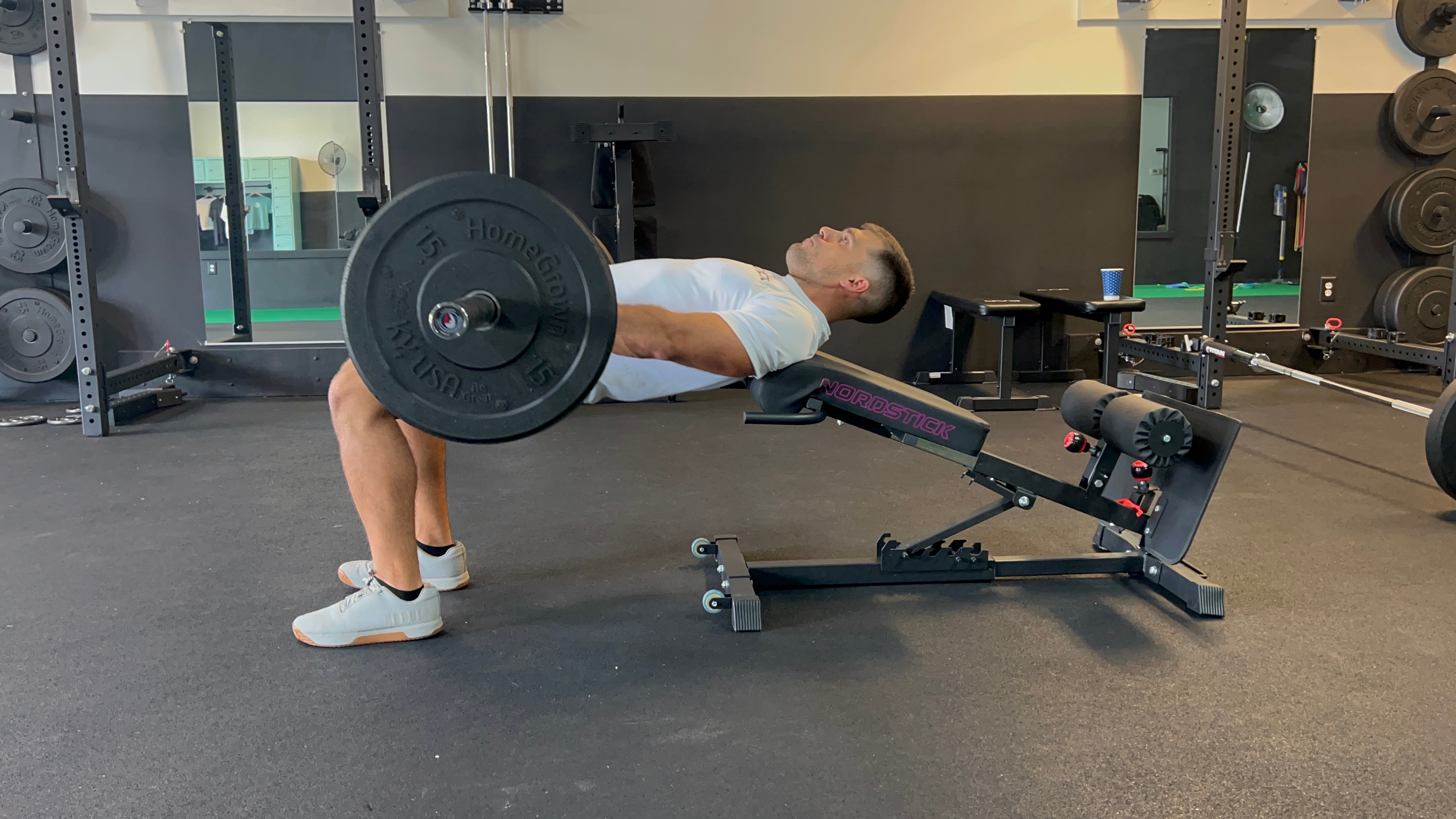Running efficiently, especially on long distances, depends greatly on maintaining proper running form. Not only does good form help prevent injuries, but it also helps you conserve energy and run faster. Here’s a quick guide to mastering your form and maintaining it, even when the miles add up.
Proper Running Form Checklist

Before you head out, run through this form checklist to ensure your body is primed for efficient movement.
Head Lifted and Gaze Forward
Keep your head up and your gaze focused about 10-20 feet ahead of you. This helps maintain good running posture, aligns your neck with your spine, and keeps forward momentum.
Slight Forward Lean
Lean slightly forward from your ankles, not your waist. This promotes forward motion without putting undue stress on your back and helps improve running efficiency.
Shoulder Blades Relaxed, and Back
Keep your shoulders down and slightly back, avoiding forward head posture. Relaxed shoulders reduce tension and keep your upper body in alignment with your stride.
Arms Swing Straight Forward and Back
Avoid crossing your arms over your chest. Keep them moving straight ahead with a slight bend at the elbows, engaging your upper body without expending extra energy.
Run Tall with Core Engaged
Engage your core to keep your torso stable and upright. This helps with maintaining good posture and reducing strain on your lower back.
Land Midfoot
Aim for a mid-foot strike rather than a heel strike. This absorbs impact, reduces the risk of running injuries, and helps maintain proper running technique.
Looking for Endurance Tips? Start with How to Train Your Endurance for Long-Distance Running, which covers the best ways to train for stamina on your runs.
Tips to Maintain Correct Running Form When Tired

Staying in good form when fatigue sets in can be challenging. Here are key strategies to help you keep running efficiently when you're tired.
Shorten Your Stride
When you feel yourself over-striding, take shorter, quicker steps. This adjustment maintains proper foot strike and helps avoid overuse injuries, allowing you to conserve energy.
Engage Your Core
A strong core helps maintain an upright posture even as you fatigue. Focus on bracing your abs slightly, which supports the spine and keeps your upper body stable.
Keep Your Arm Swing Controlled
Let your arms guide you, but avoid swinging them too widely. Controlled arm swings help maintain forward motion without extra energy drain.
Visualize Running Form Cues
Imagine someone pulling you forward from the chest. Visualization can be a helpful tool for reminding your body to lean slightly forward and keep moving efficiently.
Stay Relaxed
Avoid tensing up your neck, jaw, or shoulders. Relaxed posture allows you to run more efficiently and avoid energy-wasting tension in your upper body.
Strengthen Your Running Form: Dive into A Distance Runner Strength Training Program You Can Do at Home for exercises that complement your endurance and keep you running tall.
Exercises to Improve Running Form and Performance

Incorporating the following exercises will build strength and stability, helping you maintain good running form even on longer runs.
Nordic Curls
Nordic Curls develop your hamstrings, which are essential for explosive force and preventing fatigue in your stride. They enhance muscle memory, ensuring your legs stay strong and engaged.
Leg Extensions (Using the OmniStrap)
Strengthen your quads with leg extensions, which contribute to knee stability and support proper foot strike. Strong quads help reduce stress on your knees, ensuring a stable landing.
Back Extensions (This one was on the NordBench, by the way)
Back extensions target your lower back, which plays a key role in maintaining an upright posture during your run. A strong lower back supports good form and minimizes the risk of forward head posture.
Hip Thrusts
Hip thrusts activate the glutes, improving your ability to drive forward with each step. Strong glutes reduce strain on the lower back and enhance stride length without overstriding.
Prone Hamstring Curls (Using the OmniBands)
This exercise engages your hamstrings and supports a balanced muscle structure. Strong hamstrings keep your stride smooth and lower the risk of injury during long-distance running.
Boost Your Performance: To dive deeper into building endurance and strength, explore 5 Distance Runner Strength Training Exercises to Help Improve Your 10K Running Performance.
Additional Resources to Keep Improving Your Running Form
Whether you’re preparing for your first race or aiming to master your form, here are more reads to keep you informed and inspired:
How to Run Faster: A Tip from an Expert Sports PT – Learn tips from a PT to improve speed and efficiency.
Runner Strength Training: Enhance Your Performance and Prevent Injuries – Strength training specifically designed to support and protect runners on long-distance challenges.
Mastering and maintaining good running form is a game-changer for endurance, speed, and comfort. By focusing on form, strengthening key muscles, and following expert tips, you’re setting yourself up for smoother, injury-free miles ahead.









































Leave a comment
This site is protected by hCaptcha and the hCaptcha Privacy Policy and Terms of Service apply.